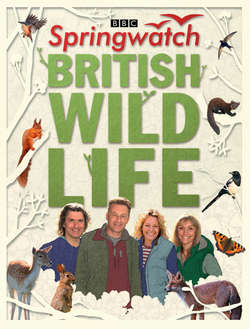Читать книгу Springwatch British Wildlife: Accompanies the BBC 2 TV series - Stephen Moss - Страница 11
ОглавлениеBlack Crows
©John Eveson/FLPA
©Andrew Parkinson/FLPA
©Winfried Schäfer/Imagebroker/FLPA
Telling apart the rook, carrion crow and raven takes practice, but given good views is reasonably straightforward.
Crows are a bit of a paradox. Few birds are so hated, yet few are so intelligent and fascinating. Why they are so loathed by so many people is a combination of the way they behave and their appearance: there is a long tradition of black birds being associated with evil, and birds don’t come much blacker than some of our crows.
There are four black kinds of crow that you are likely to encounter in Britain: the carrion crow, rook, jackdaw and raven. Then there are two other mainly black species: the hooded crow and chough, though these tend to be confined to more remote northerly and westerly parts of the country.
Of all our birds, perhaps the crows cause the most confusion about their identity. Indeed, for two species, the rook and the carrion crow, it is said that the best way to tell them apart is whether they are in a flock or solitary: a lone bird is supposed to be a crow, whereas a flock of sociable birds is meant to be rooks. Though it is certainly true that the rook is more gregarious than its cousin, and is often found in large feeding flocks on farmland, it is also the case that carrion crows may form large flocks, especially as they go to roost at night. The confusion is made worse by the term ‘scarecrow’: scarecrows were originally made to scare off marauding flocks of rooks, not crows!
So if behaviour isn’t a reliable way to tell them apart, how can we identify them? Well, if you get a reasonable look at a ‘black bird’, you should pay most attention to its overall colouring, especially on the head. Carrion crows are all black, including the bill, giving them a rather sinister appearance, while rooks have a greyish-white bill and face. Rooks are also more slender, with a longer neck and smaller head, and their bills are more pointed. In flight, these two can also be told apart – the rook’s style is floppier, and shows longer, more fingered wings – but it takes a lot of experience to make the distinction.
The rook and carrion crow were once the only two large crows in most of Britain, but now they have been joined in many areas by a third species, the raven. Once persecuted so much that it was seen only in remote parts of the northern and western uplands, the raven has recently spread south and east, and can now be found nesting in Kent. Ravens are huge, bulky, black birds with long wings, a large head, thick neck and massive bill, giving them a very front-heavy appearance as they fly. But the easiest way to confirm the identity of a raven is when it calls: a tremendously deep, grunting croak that you feel as much as hear!
The fourth, mainly black, species of crow, the jackdaw, is much smaller and easier to identify. Its call as it flies overhead is a distinctive ‘chack’, which gave the bird its name. When you see a jackdaw on the ground, it is easy to tell it apart from its larger relatives. Small and compact, it has a short, stubby bill and a very noticeable light grey patch on the back of its neck.
Our remaining two kinds of ‘black’ crow are not widespread. The hooded crow was once thought to be the same species as the carrion crow, but it is actually easy to tell apart, as it has large areas of grey contrasting with the black of its plumage. The ‘hoodie’, as it is often known, replaces the carrion crow in north and west Scotland, Ireland and the Isle of Man. The other species, the chough, has an even smaller range. It can be found only on the Scottish islands of Islay and Jura, in west Wales, western Ireland and, for the past few years, Cornwall. The chough’s return to this English county in the early twenty-first century was cause for great celebration, as the chough is one of three local symbols (the other two being fishing and tin-mining) on the Cornish coat of arms. The name often puzzles people, but, of course, it used to be pronounced ‘chow’, rather than ‘chuff’, and is a representation of the bird’s echoing call.
©Hugh Clark/FLPA
The jackdaw is a sociable bird, often gathering in large, noisy flocks.
©Frans Van Boxtel/FN/Minden/FLPA
©Mike Lane/FLPA
Hooded crow and chough are two of the rarer British members of the crow family.
